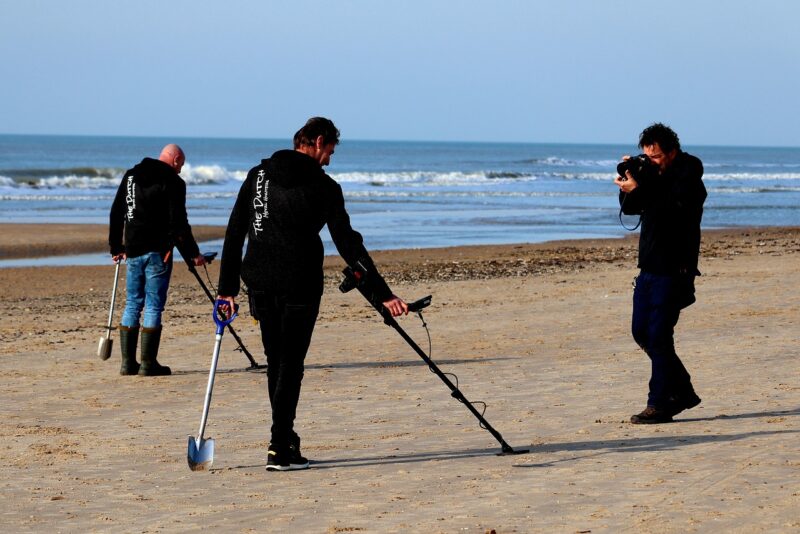The Curse of Oak Island: The Hunt for Pirate Treasure and the Island’s Mysteries
November 15, 2024

The intriguing legend of Oak Island has captivated treasure hunters, historians, and conspiracy theorists for centuries. Situated off the coast of Nova Scotia, Canada, this small landmass is home to a myriad of myths and tales, most famously the possibility of hidden pirate treasure. But the enigma of Oak Island goes far beyond just the allure of gold and riches; it is steeped in history, archaeological digs, and, some say, a curse that has claimed lives and fortunes.
1. The Origins of the Oak Island Mystery
The story of Oak Island begins in 1795 when a young boy named Robert Restall discovered an unnatural depression in the ground while exploring. Soon after, he enlisted help from friends and family to dig out what they believed to be evidence of buried treasure. As they excavated, they uncovered layers of wooden planks, coconut fibers, and stone structures that seemingly indicated something hidden below.
This discovery sparked a treasure fever that has not faded to this day. Over the years, many groups have attempted to discover what lies beneath Oak Island, fueled by tales of pirates, including Captain Kidd and Blackbeard. However, each dig has turned up just as many questions as answers, contributing to the island’s ever-growing mystery.
2. The Curse: Fact or Fiction?
Legend has it that there’s a curse associated with those who seek to unearth the treasure of Oak Island. According to local lore, seven men must die before the treasure is found. This menacing notion has haunted explorers since Restall’s initial dig.
Several unfortunate incidents have led treasure hunters to believe in the truth of the curse. Notably, during the early 1900s, a series of accidents led to the deaths of multiple men involved in the ongoing searches. The most tragic incident occurred when five men, including Restall himself, drowned after being trapped in the flooded depths of a shaft they were digging. Their deaths, combined with the failures of several subsequent expeditions, have contributed to the island’s reputation as cursed.
3. Notable Expeditions and Discoveries
Numerous teams have attempted to solve the mystery of Oak Island, each leaving its mark on the island’s landscape and lore. Here are some key expeditions and findings that stand out:
- The 1800s Excavations: The notorious Money Pit was dug extensively during the early nineteenth century, with many attempts to reach the elusive treasure. These early digs uncovered various artifacts, but each attempt seemed to lead to disaster.
- The Truro Company (1861): This group of treasure hunters uncovered a stone inscribed with strange symbols, later known as the “Oak Island Cipher Stone.” This stone raised more questions about what, if anything, lies buried on the island, adding to the mystery further.
- The Onslow Company (1897): Another digging effort that failed to reach the treasure but opened up new theories about the geological features of the island itself. They discovered numerous artifacts, leading to assumptions about past cultures inhabiting the area.
In 2014, the History Channel’s show “The Curse of Oak Island” reignited fascination with the island, introducing modern exploration techniques and theories, including ground-penetrating radar and advanced drilling technologies.
4. What Lies Beneath: Theories and Speculations
The treasure hunt on Oak Island is not just about gold; it has evolved into a quest for understanding what historical treasures could be buried there. Here are some of the most popular theories about what lies beneath:
- Pirate Treasure: The most widely accepted theory is that the island is the resting place of pirate loot, possibly belonging to Captain Kidd or even the lost treasures of the Knights Templar.
- Historical Artifacts: Some archaeologists believe that the island may hold artifacts from various cultures that traversed the area, including evidence of early European settlers or indigenous peoples.
- Religious Relics: A popular belief among serious treasure hunters is that the island may hide religious artifacts, including parts of the Holy Grail or other sacred objects, possibly hidden by the Templars or Freemasons.
Each of these theories carries its own weight of speculation, yet no concrete evidence has emerged to date.
5. The Modern-Day Treasure Hunt
The cast from the History Channel series have introduced viewers to modern technology and methods of exploration. The current team consists of brothers Rick and Marty Lagina, who, after watching a documentary about Oak Island, were compelled to uncover its secrets. Their journey has attracted a plethora of supporters and researchers who have eagerly joined the venture.
Since the show began, viewers have watched the team uncover various artifacts, ranging from stone tools to intriguing inscriptions. While no definitive treasure has been found, the treasure-hunting community remains diligently optimistic. They continue to explore the depths of the Money Pit and other locations on the island with a visit to
modern tools ranging from a plethora of excavation equipment to sophisticated scanning technology.
Recently, they unearthed what appears to be a lead cross dating back to the 17th century, igniting further theories about possible connections to pirates or influential figures in history. This evidence hints at the idea that maybe, just maybe, the legends hold some truth.
6. Conclusion: The Pursuit of Mystery
The mystery of Oak Island continues to reign as one of the most enthralling treasure hunts of our time. Despite the curses, numerous unsuccessful expeditions, and the relentless pursuit of treasure, the island remains an irresistible lure for adventurers, historians, and dreamers alike. The ongoing exploits keep the dream alive not only to find treasure but to solve the complex puzzles that build the history of humankind.
Ultimately, whether or not treasure ever makes its way above ground, Oak Island is representative of broader human urges: the desire to explore, uncover, and connect with stories beyond our everyday realities.







